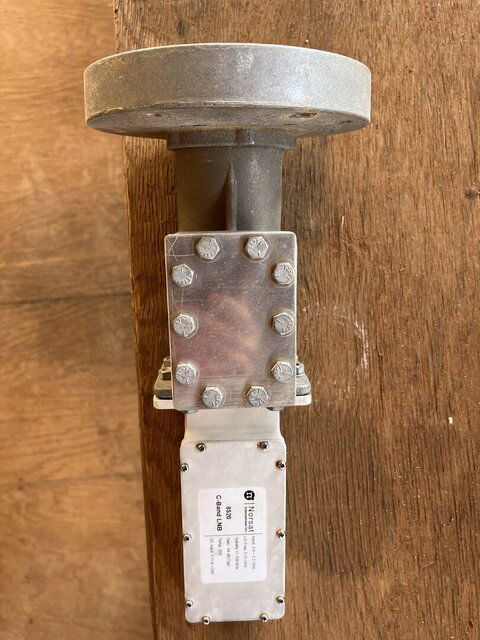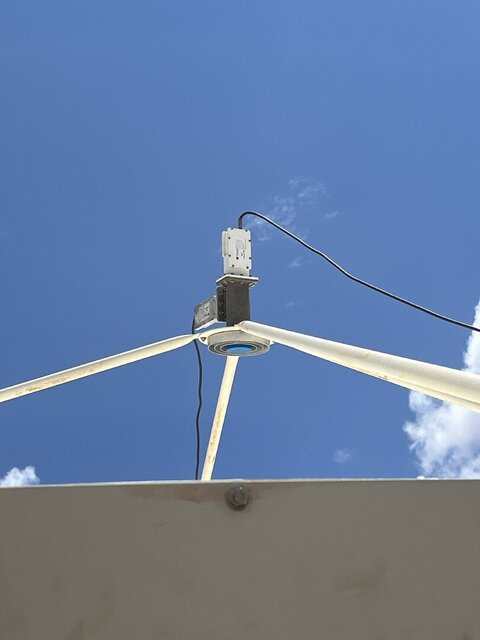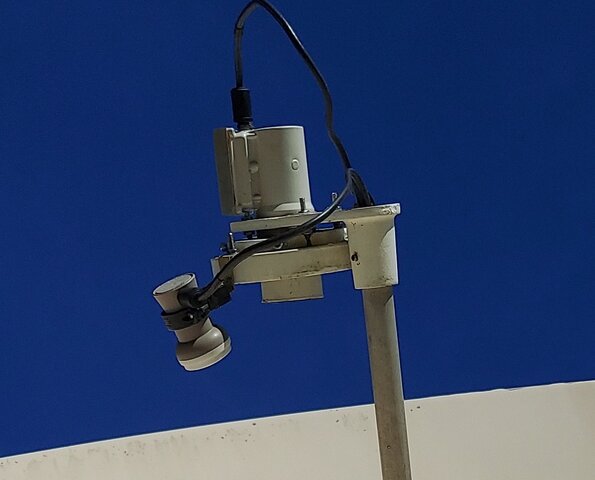Hello,
We are attempting to get the AFN broadcast on a 4.5 meter (14.7') dish using the following equipment:
- Challenger Communications Prime Focus 4.5 Meter dish (manual Az-El mount)
- Harvard Scientific HS-200 Dual C-Band Feed Horn
- NORSAT 8520 C-Band LNB
- Cisco 9865H Signal Decoder
We've identified two satellites that have footprints that cover our location and are carrying AFN feeds, they are listed below with their respective azimuth and elevation points as calculated by dishpointer.com:
- SES-5 (5.2E): El 44.1, Az 266.9
- NSS-12 (57E): El 75.3 Az 102.3
When we point and attempt to fine-tune the dish for SES-5 we are able to get a signal level of approximately 76-77 and an unstable lock and signal quality of 5-22 which is enough to receive time and the guide but no video/audio.
Pointing at NSS-12 gives similar signal levels of 70-73 but no lock or signal quality.
We're at a bit of a loss on how to proceed, we've spent a lot of time making small adjustments to both azimuth and elevation but haven't been able to significantly increase the level or quality past what's listed above. We have attempted to make adjustments to skew as well by turning the feed horn in its mount but haven't seen any changes in the signal.
Any advice at all on how we might be able to get a stable signal would be very much appreciated, if you have any questions or if I've left any critical information out please query and I'd be happy to provide what I can. Thanks for your time and help!
We are attempting to get the AFN broadcast on a 4.5 meter (14.7') dish using the following equipment:
- Challenger Communications Prime Focus 4.5 Meter dish (manual Az-El mount)
- Harvard Scientific HS-200 Dual C-Band Feed Horn
- NORSAT 8520 C-Band LNB
- Cisco 9865H Signal Decoder
We've identified two satellites that have footprints that cover our location and are carrying AFN feeds, they are listed below with their respective azimuth and elevation points as calculated by dishpointer.com:
- SES-5 (5.2E): El 44.1, Az 266.9
- NSS-12 (57E): El 75.3 Az 102.3
When we point and attempt to fine-tune the dish for SES-5 we are able to get a signal level of approximately 76-77 and an unstable lock and signal quality of 5-22 which is enough to receive time and the guide but no video/audio.
Pointing at NSS-12 gives similar signal levels of 70-73 but no lock or signal quality.
We're at a bit of a loss on how to proceed, we've spent a lot of time making small adjustments to both azimuth and elevation but haven't been able to significantly increase the level or quality past what's listed above. We have attempted to make adjustments to skew as well by turning the feed horn in its mount but haven't seen any changes in the signal.
Any advice at all on how we might be able to get a stable signal would be very much appreciated, if you have any questions or if I've left any critical information out please query and I'd be happy to provide what I can. Thanks for your time and help!







